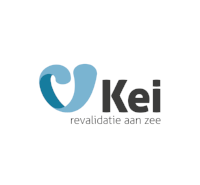Approach
Möbius supported the KEI in creating the strategic care plan, using a structured process and involving the most important stakeholders. A number of key principles for the creation of the strategic care plan were:
- With regard to network creation: generation of a care strategy in consultation with / supported by the key stakeholders;
- Based on demand (specific existing and anticipated patient needs);
- Focused on the individual patient and his/her personal situation and needs.
Many different factors were identified during this exercise:
- Internal factors: geographical access, the KEI’s role in the care region, the relevant sphere of influence today, the age profile and pathologies for which patients are admitted to the KEI, the current quality of the offered care, the perception, level of satisfaction and expectations of patients staying in the KEI as well as social services in the hospitals throughout Flanders (as those refer patients to rehabilitation services), the opinions and vision of physicians / specialists, the management and the Board of Directors;
- External factors: the rehabilitation offer in Flanders, the phenomenon of second homes, demographic evolution (aging population) in Flanders and in the KEI region, anticipated needs in hospital capacity by 2025, the formation of loco regional networks and the need for specialisation/supra-regional projects, the opinions and vision of experts outside the KEI.
Desk research
In an explorative phase Möbius analysed large amounts of existing documentation and studies (annual report, admission figures, results from the Care Inspection audit and own quality measurements, KCE research into the required hospital capacity in 2025, etc.).
Stakeholder questionnaires
Based on a large experience with surveys, Möbius conducted a wide range of stakeholder questionnaires related to the network formation and inclusion of the patient perspective. In-depth telephone interviews were conducted with referring parties to map out important aspects for consideration before quantifying this input with an online survey. In addition, Möbius carried out face-to-face interviews with patients, in order to gather input to integrate the patient perspective. Meetings were also held with the directors of many hospitals and a number of other care institutions (residential care centers, recovery institutes, etc.) to include their perspective and vision. In doing so, Möbius operated as an independent and neutral party to understand and consolidate the views and vision of many players in the network (hospital directors, policy makers, medical specialists and professors).
SWOT
All input was used to make a SWOT analysis and consequently determine the strategic direction in workshops together with the physicians and entire management team at the KEI. After presentation to and validation by the Board of Directors, the strategic direction was elaborated in more detail in meetings and workshops with involved parties at the KEI and selected collaborative network partners. The results of this exercise were specified in a detailed strategic care plan for the next 10 years.
Result
The strategic care plan contains a clear description of the KEI’s mission, values, vision and strategic objectives, and the strategic objectives have been further specified by means of operational objectives. There was a reflection on topics such as the choice of specific niches, regional and supraregional partnerships, collaboration with primary care, the internal organisation, etc.
The decision was made to work with pathology-specific biopsychosocial care profiles, checklists with a set of (evidence-based) indicators completed individually by all caregivers involved in the multidisciplinary team. This allows an efficient exchange of patient data in multidisciplinary meetings and results in individual (short and long-term) objectives, specific activities per care provider, and a long-term care plan, … which involves an extremely thorough form of segmentation, to suit the personal situation, needs and wishes of the patient as much as possible.
Based on a first needs assessment, the future service was also quantified and translated into capacity requirements.







